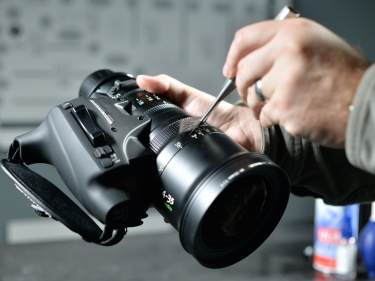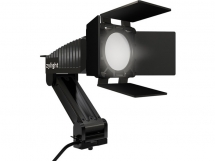| Українська | English | |||||||||||
|
|||||||||||
| News | About company | Service-centre | OB Van/SNG Rental | NextGen Energy Solutions | Contact us |
|
|
Engineering Service, Inc.
» News News There’s a ton of information and advice on proper cinematography techniques from self-professed experts floating around the internet. After having operated for 30 years, we’d like to set the record straight on a few topics specific to lens care by sharing what we at Duclos Lenses consider standard policy for our staff of experienced technicians.
Here are a few simple dos and don’ts to keep in mind the next time you sit down to perform a bit of maintenance on your favorite lens. Following these simple rules can save you hundreds or even thousands of dollars on a costly element replacement. DO's 1. Do only what is absolutely necessary This is possibly our most important tip. Don’t undertake more than your skill level can handle and over-do it. We find that not observing this rule is the number one cause of lens element surface damage. 2. Work in a clean, temperate environment Attempting to clean a lens element in a dusty, windy environment can not only be frustrating, but it can also leave you worse off than when you started. 3. Blow off particles before wiping an element Compressed air can be your best friend. Removing dust, dirt, and debris with a quick blast of clean, compressed air can remove large, harmful particles quickly and simply. 4. Work from the center out to the edge when using wipes This is primarily to avoid picking up harmful particles that are commonly found between the front element and it’s outside housing. Working from the center out minimizes this risk. 5. Use a cleaning solution to remove contaminants The best way to clean stains or contaminants off your lens is with a liquid cleaning solution applied directly to a wipe, but never sprayed on the lens element itself. 6. Use a soft bristle brush to remove sand, dirt, and debris from the lens body. Never to be used on the glass itself, a brush can be a very effective tool for removing large contaminants from the intricate nooks and crannies of a lens body. The DOs are important. But the DON’Ts are even more important. As we mentioned in the first DO rule, only do what’s absolutely necessary. The least amount of contact you have with your lens, the better off you’ll be. Prevention is the best method for maintaining a perfect, clean lens. DON’Ts 1. Don’t use any reusable cloths or wipes on a lens element Microfiber cloths can be very useful for cleaning the anodized exterior of a lens, but should never be used on a glass element. Microfibers are designed to trap particles from the surface they’re cleaning. After a few uses, a microfiber effectively becomes sandpaper for your lens. 2. Never reuse a lens tissue of any kind Once you’ve wiped your lens element and lifted the tissue away, it’s trash. Never lift a tissue away and then reuse it. Even high-end, lint-free wipes should not be used more than once. 3. Don’t spray cleaning solution directly onto your lens Lens cleaning solutions come in all sorts of sizes, shapes, and styles but they have one thing in common—they shouldn’t be sprayed onto your lens. Spraying directly onto the lens can cause the liquid to penetrate the housing and build-up condensation inside the lens housing. 4. Don’t use brushes on lens elements Lens brushes can be useful for the lens body, but using them on the element itself can just spread oils and debris and potentially cause damage. 5. If you’re using canned air, don’t shake or tip the can while spraying. It’s best to spray the can upright, away from your lens for a second to clear any propellant out of the nozzle. Spraying propellant onto your lens element can potentially damage it. 6. When in doubt, bring your lens to a professional A good service shop should offer to do a basic cleaning at no charge. When it comes to simply cleaning the front and rear elements, a skilled, experienced service shop should be able to take care of most common cleaning tasks in a matter of minutes. There are dozens of other tips that we could offer but these general rules should get you through most situations. As in most situations, there’s an exception to every rule, so please don’t consider this quick guide absolute. As long as you use common sense and don’t hesitate to get advice from a professional lens shop when necessary, your lenses should be in good shape.
« To the list of news |
|
|||||||||||||||||
 |
+38 (044) 593-18-20 +38 (073) 593-18-20 +38 (096) 532-96-82 +38 (095) 532-96-82 Service center Telegram @Engineer_Service |

|
|
|||||
 |
e-mail: engineer-service.tv 15 Vavylovykh str., Kiev, 04060, Ukraine Authorized service centre of Panasonic, Sony, JVC, Fujinon, Canon |
|||||||








